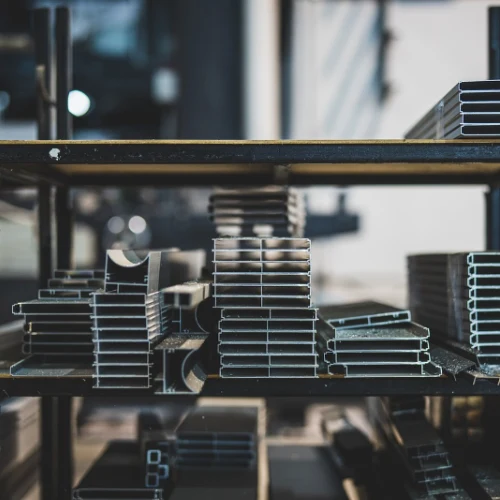The stainless steel market is caught in a high-stakes game of inventory management as global stockpiles hit 109.96 million tons by late May 2025. with cold-rolled inventories at 61.78 million tons . This surplus, driven by weak demand and oversupply, has forced suppliers to adopt unconventional tactics—from steep discounts to export-focused campaigns—to avoid being buried under unsold stock. Let’s explore the forces behind this glut and the clever strategies reshaping the industry.

1. The Inventory Conundrum: Why Stocks Are Piling Up
Three interconnected factors are fueling this crisis:
Demand Destruction: Post-pandemic recovery has stalled, with global construction activity down 9% YoY in key markets like Vietnam and Thailand . Meanwhile, the EU’s Carbon Border Adjustment Mechanism (CBAM) has added €85 per ton to Chinese exports, eroding profit margins by 62% for some producers .
Supply Overhang: Despite Indonesia’s 40% nickel output cut in 2025. Chinese mills continue to churn out stainless steel at breakneck speed. For example, Jiangsu-based producers like Hongwang Stainless have boosted capacity by 15% since 2024. flooding the market with 304-grade coils priced at ¥11.900–13.600/ton .
Seasonal Slump: May–June typically sees reduced demand as manufacturers gear down for summer holidays. In Wuxi, China’s stainless hub, trading volumes for angle steel—a key inventory component—plummeted 15% MoM in late May .
2. Market Reactions: From Panic to Pragmatism
To combat the glut, suppliers are deploying a toolkit of promotions and operational shifts:
a. Price Wars and Flash Sales
Tiered Discounts: Producers like TISCO are offering 10–15% discounts on bulk orders of 304-grade stainless sheets, with additional 5% rebates for payments within 15 days. One Zhejiang-based exporter reported a 22% sales jump after slashing prices to ¥12.100/ton .
Dynamic Pricing: Digital platforms like Alibaba.com now use AI algorithms to adjust prices in real time. A 304/2B cold-rolled coil listed at ¥13.400/ton in early May was marked down to ¥12.750/ton by month-end to match competitor offers .
b. Export-Driven Diversification
Emerging Market Push: Indian exporters like Jindal Stainless are rerouting 35% of EU-bound shipments to Southeast Asia and Africa, leveraging faster delivery times and 8% lower prices than Chinese rivals .
Trade Fairs and Subsidies: China’s Ministry of Commerce is funding participation in overseas trade shows, with 50+ companies showcasing stainless products at the 2025 Dubai Steel Expo. This initiative helped secure $120 million in export contracts within two weeks .
c. Product Innovation and Niche Targeting
High-Margin Grades: Producers are pivoting to 316L stainless steel (used in pharmaceuticals) and 430-grade (for automotive exhaust systems), which command 20–25% premiums over standard 304 .
Sustainable Solutions: Brands like IKEA are demanding stainless steel with 50% recycled content, pushing mills like ArcelorMittal to invest in closed-loop recycling systems. These eco-friendly alloys now account for 18% of global production .
3. The Road Ahead: Navigating Uncertainty
Short-Term Challenges
Inventory Turnover Pressure: With global stainless steel stocks at 109.96 million tons , suppliers face 63 days of supply—well above the 50-day ideal . Distributors are resorting to flash sales and volume discounts to clear excess stock, while selectively holding 300-series alloys for niche markets.
Policy Pitfalls: The EU’s CBAM will escalate in 2026. requiring importers to purchase carbon credits. Producers must adopt green hydrogen and electric arc furnaces to comply, adding $150–200/ton to production costs .
Long-Term Opportunities
Hydrogen Economy: Demand for stainless steel in hydrogen pipelines is projected to grow at a 12% CAGR through 2035. creating a new revenue stream for high-pressure seamless pipe manufacturers .
EV Infrastructure: While LFP batteries reduce nickel demand, stainless steel remains critical for EV charging stations and battery casings. The global stainless steel market is still expected to hit $179.6 billion by 2029 .
4. Surviving the Storm: Keys to Resilience
Agile Sourcing: Partner with multiple suppliers (e.g., nickel from Indonesia, chromium from South Africa) to avoid single-point failures.
Data-Driven Decisions: Use AI-powered analytics to forecast price trends. For instance, monitoring Indonesia’s rainy season impacts on nickel ore logistics can help anticipate supply bottlenecks .
Regulatory Compliance: Invest in ISO 14064 carbon accounting and CBAM reporting systems to avoid penalties. One Chinese mill reduced its carbon footprint by 22% in 2024 by switching to solar-powered rolling mills .
Conclusion
The stainless steel industry’s inventory crisis is far from over, but smart players are turning adversity into opportunity. By embracing dynamic pricing, targeting emerging markets, and innovating product lines, they’re transforming surplus stock into strategic advantages. As the market evolves, agility and sustainability will be the keys to survival—proving that even in a sea of stainless steel, those who adapt can navigate the storm.